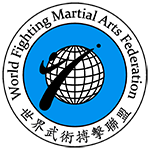Social Purpose of Martial Arts
Martial arts was originally developed for the purpose of combat, self-defense, and the protection of communities. As societies became more civilized and legal and defense systems developed, the need for martial artists with combat skills diminished since the role of protecting communities and nations fell to the more sophisticated law enforcement agencies and the military.
As societies matured, martial arts transitioned from being used for purely combative and defensive purposes into being used for the training of body and mind. All over the world, martial arts practitioners developed systems indigenous to their particular culture, history, and philosophy, preserving the style’s combat experience steeped in the rich traditions of their history accumulated over thousands of years.
Thanks to advanced technology, we are now globally connected and capable of sharing all these diverse martial arts systems. Local, regional, and international martial arts organizations are promoting and preserving world-wide martial arts styles and the cultural heritage from which they emerge. Martial arts systems such as Kung Fu, Karate, Taekwondo, boxing, kickboxing, wrestling, jujitsu, weapons, etc. are now widely practiced in most parts of the world.
The martial arts culture is experiencing a boom in growth, with academic degrees being offered in many colleges and universities. The unifying root of all martial systems is the core values upon which these diverse systems are founded. From the beginning, martial arts trained body and mind, and the moral and ethical characters of the martial practitioners. The core values then are the same character building core values now, and just as they influenced and shaped the communities and societies from their inception, so too do they have the potential to positively shape the health and well-being of communities and societies today, and tomorrow.
